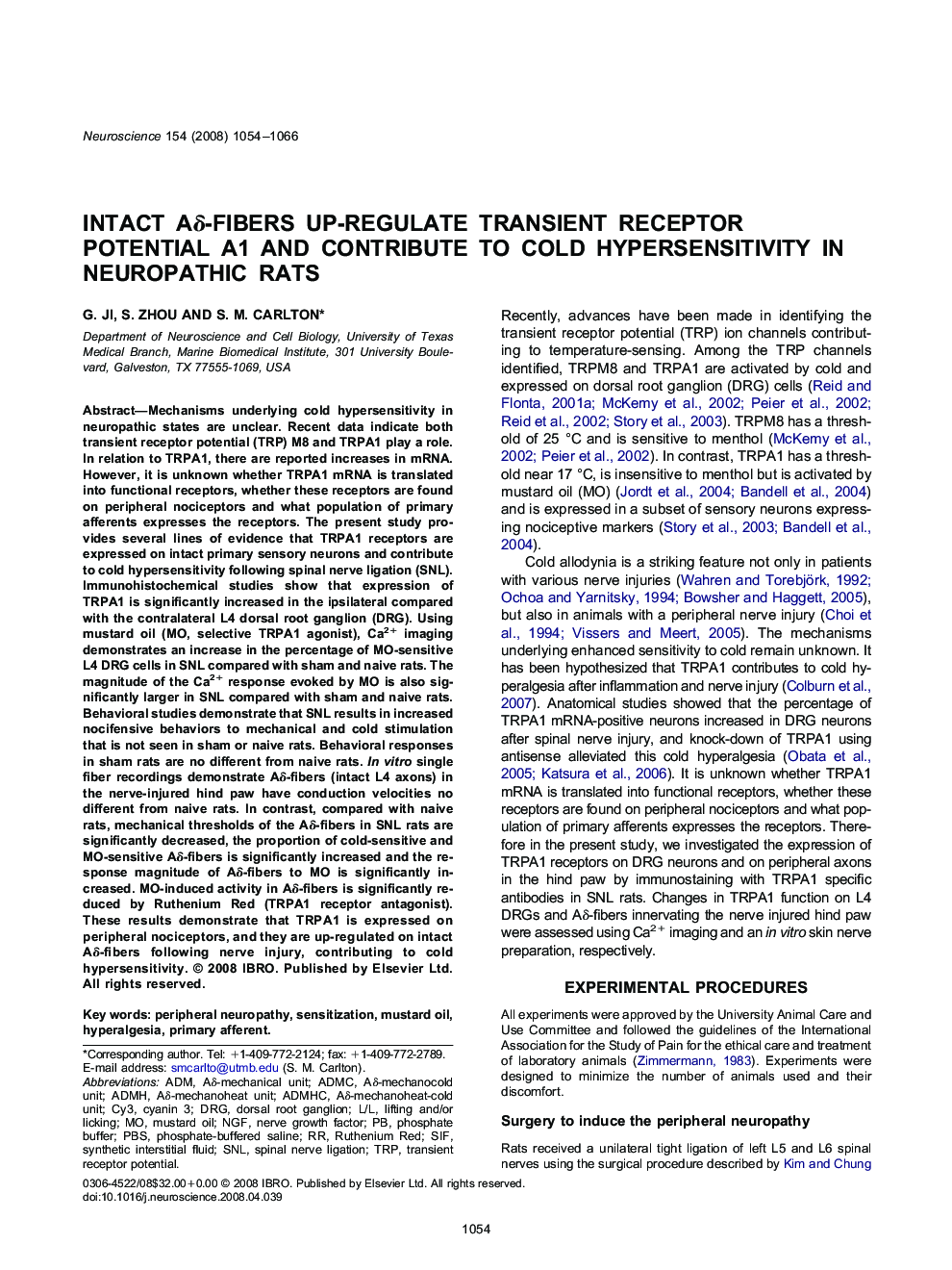| Article ID | Journal | Published Year | Pages | File Type |
|---|---|---|---|---|
| 4341543 | Neuroscience | 2008 | 13 Pages |
Mechanisms underlying cold hypersensitivity in neuropathic states are unclear. Recent data indicate both transient receptor potential (TRP) M8 and TRPA1 play a role. In relation to TRPA1, there are reported increases in mRNA. However, it is unknown whether TRPA1 mRNA is translated into functional receptors, whether these receptors are found on peripheral nociceptors and what population of primary afferents expresses the receptors. The present study provides several lines of evidence that TRPA1 receptors are expressed on intact primary sensory neurons and contribute to cold hypersensitivity following spinal nerve ligation (SNL). Immunohistochemical studies show that expression of TRPA1 is significantly increased in the ipsilateral compared with the contralateral L4 dorsal root ganglion (DRG). Using mustard oil (MO, selective TRPA1 agonist), Ca2+ imaging demonstrates an increase in the percentage of MO-sensitive L4 DRG cells in SNL compared with sham and naive rats. The magnitude of the Ca2+ response evoked by MO is also significantly larger in SNL compared with sham and naive rats. Behavioral studies demonstrate that SNL results in increased nocifensive behaviors to mechanical and cold stimulation that is not seen in sham or naive rats. Behavioral responses in sham rats are no different from naive rats. In vitro single fiber recordings demonstrate Aδ-fibers (intact L4 axons) in the nerve-injured hind paw have conduction velocities no different from naive rats. In contrast, compared with naive rats, mechanical thresholds of the Aδ-fibers in SNL rats are significantly decreased, the proportion of cold-sensitive and MO-sensitive Aδ-fibers is significantly increased and the response magnitude of Aδ-fibers to MO is significantly increased. MO-induced activity in Aδ-fibers is significantly reduced by Ruthenium Red (TRPA1 receptor antagonist). These results demonstrate that TRPA1 is expressed on peripheral nociceptors, and they are up-regulated on intact Aδ-fibers following nerve injury, contributing to cold hypersensitivity.
